British Flag Cart - being pulled by a monkey riding on a dog
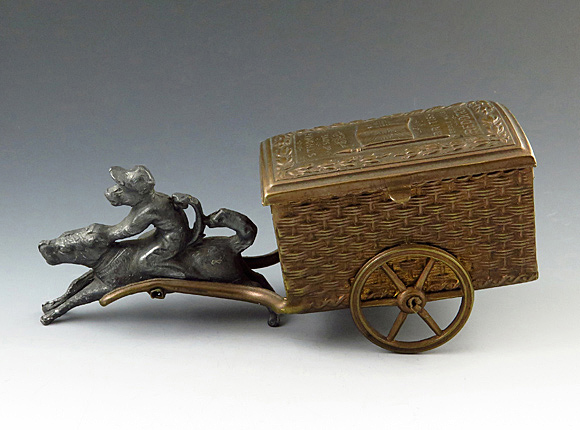
Needle Case
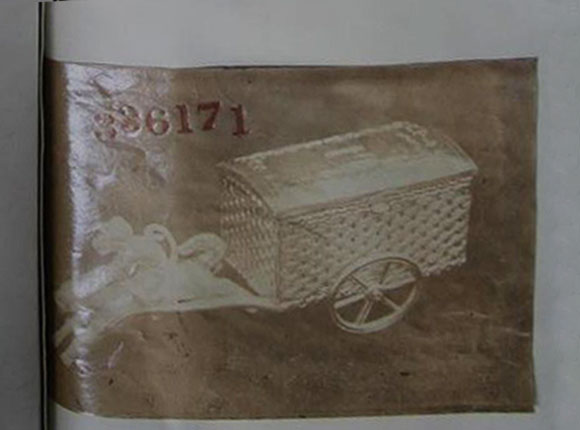
Design Representation
Design Details
Needle Case Type: |
Figural (not listed on design registration as a needle case) |
Patent/Registered to: |
S. Thomas & Sons - Redditch |
Patent/Design Representation #: |
Ornamental Class1: Metal: #336171 |
Patent/Design Registration Date: |
June 17, 1879 |
Location of Patent/Design Registration: |
The National Archives (TNA) - Kew, UK |
Reference #: |
TNA Representation - BT 43/45/336171
TNA Register - BT 44/4/336171 |
Dimensions: |
3.3 x 8 x 4.4 |
Material: |
Brass |
Name Variations: |
S. Thomas & Sons - Redditch Son |
Other Variations: |
None |
Additional Photographs

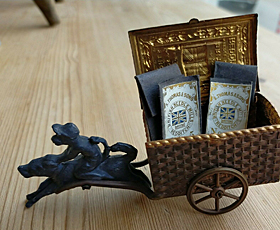
Views with top opened (photos from eBay)
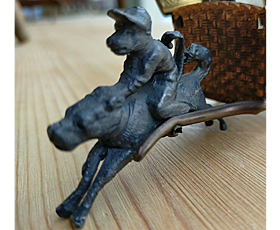
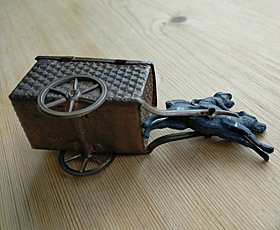
Detail of the monkey riding on a dog and bottom view (photos from eBay)
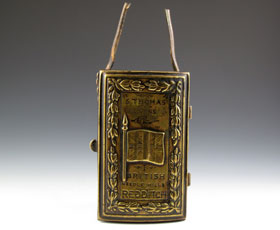
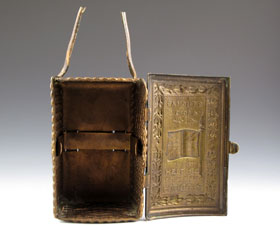
Cart only: Top closed and open
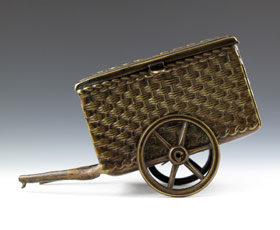
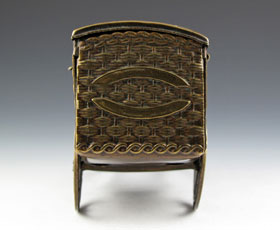
Cart only: Clasp side and back
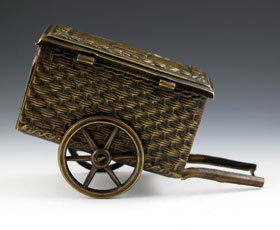
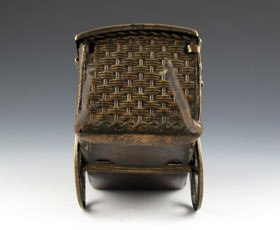
Cart only: Hinge side and front
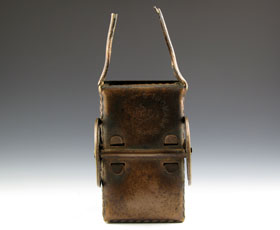
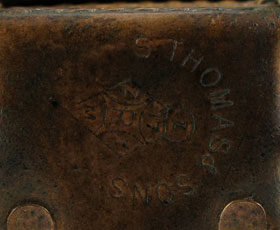
Cart only: Bottom and signature detail
Facts
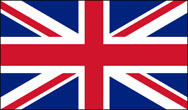
The British flag, also known as the Union Jack, dates to 1801 when Ireland and Great Britain were united. It is composed of the red
cross of St. George (patron saint of England) edged in white superimposed on the cross of St. Andrew (patron saint of Scotland) which is
superimposed on the cross of St. Patrick (patron saint of Ireland). The patron saint of Wales, St. David, was not included because Wales
became part of the Kingdom of England in 1282 and was already represented by the flag of England. Today the Union Jack represents the
United Kingdom of Great Britain and Northern Ireland.
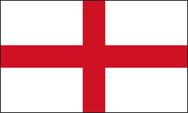
Flag of England
History
Great Britain is an island in the North Atlantic located off the northeastern coast of continental Europe that includes England, Wales and
Scotland. It the largest island in Europe and the 9th largest island in the world in land mass. The population in 2011 was around 61
million. The Romans used the Latin word ‘Britannia’, which meant land of the Britons, to describe the area in the 1st century
BC. After the Norman Conquest of Britain in 1066 the area became known as Britannia major, ("Greater Britain") in order to
distinguish it from Britannia minor ("Lesser Britain"), a region in Brittany, France that was settled by Celtic immigrants from the
British Isles after the fall of the Western Roman Empire. The first recorded use of the term Great Britain occurred in 1474 in a royal
marriage proposal. It became more common after 1604 when King James VI and I was identified as the "King of Great Brittaine, France and
Ireland”.
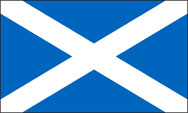
Flag of Scotland
Miscellaneous
In 1707 the Kingdoms of England and Scotland were united and the term United Kingdom of Great Britain or simply United Kingdom was
occasionally used in the 18th century. Then in 1801 the Kingdom of Great Britain was united with the Kingdom of Ireland creating the
United Kingdom of Great Britain and Ireland. This name was used throughout the Victorian period; however it was changed again in
1922 when Ireland was partitioned into two parts, Northern Ireland which remained part of the United Kingdom and the rest of Ireland which
became the independent state known as the Republic of Ireland.
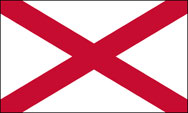
St. Patrick's Flag (Ireland)






















